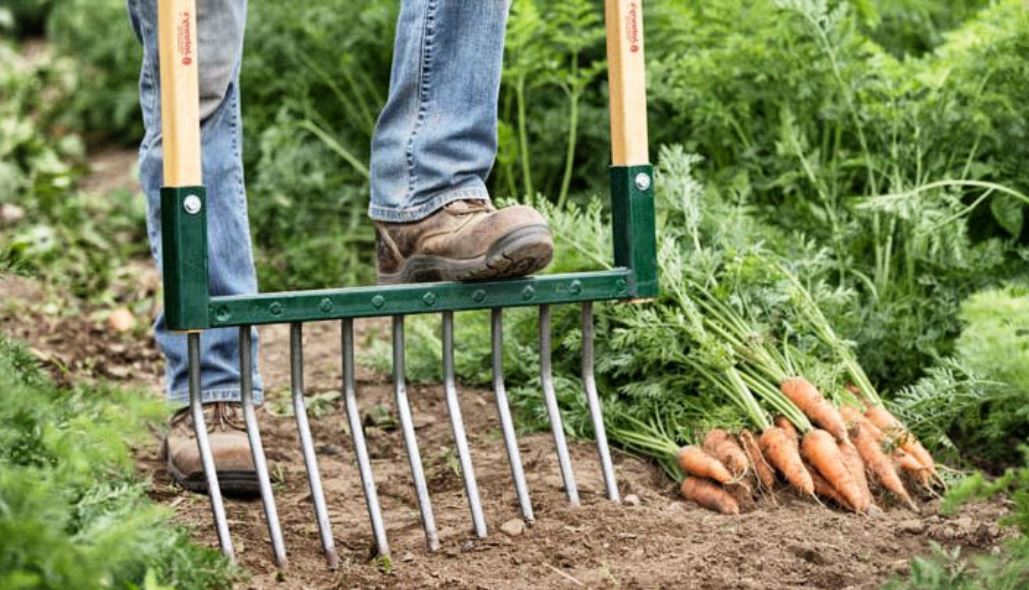Best tools for turning over soil
There are two main tools for turning over soil: the fork and the shovel. Both are great for preparing soft, wet soil. The fork is more precise than a shovel, but it is not recommended for working in hard-packed soil. A shovel has a limited range of motion, but is still an effective tool. The spade has a flat edge that is great for raking out tough spots.
The deep spader is used for turning over heavy soil. It is long and aerates the soil as it digs in. There are two types: small and large spaders. You can also get ones that are made for kneeling. For the deeper soil, you’ll want to choose a longer spader. It’s better to use a longer spader if the soil is heavy or compacted.
The best tools for turning over soil are those that are adjustable and lightweight. A good quality shovel will work well for turning over large areas of soil. A garden fork can be a great tool for small projects. This tool has thick, steel tines and a long handle, which allows you to use it with a two-handed grip. The fork is also useful for digging around deep roots. A rotor tiller is ideal for turning over soil around trees and other plants.
Sun Joe TJ604E Electric CULTIVATOR

Designed for small backyard gardens, the Sun Joe TJ604E Electric Ccultivator has an eight-inch deep cutting capacity. Designed for easy storage after planting season, this tool is lightweight and folds easily. It also comes with a two-year warranty. It also comes with an extra-long extension cord. It can work in areas where outlets are hard to find. The TJ604E is the ideal choice for those who live in an area with limited space.
The Sun Joe TJ604E Electric CULTIVATOR is designed to work well in smaller to medium-sized yards. It cuts wide and deep in the soil and has an easy-to-use handle that can fold in a few seconds. It does require assembly, but the parts are relatively easy to assemble. Just make sure that you keep the power cord out of the tines and do not get them tangled up.
A Sun Joe TJ604E Electric CULTIVATOR features an easy-to-use design, a two-year warranty, and an adjustable wheel position. The tiller can be set to control the depth of the soil, which is great for preparing beds for planting. This model is easy to use, but the power cord can get tangled in the tines. However, the machine is very sturdy and durable, and it is rust resistant.
Fiskars Ergo D-handle Steel Garden Fork

The Ergo D-handle Steel Garden Forked by Fiskars is an ergonomic tool that makes mixing, turning, and scraping loose materials easy. Unlike wood or fiberglass, steel is more durable and won’t bend. The fork’s mid-grip and teardrop-shaped shaft will help you get the job done with less strain. It also features a protective, molded handle for extra comfort.
This steel fork from Fiskars has an ergonomic design and a long, strong shaft for better control and comfort while you dig. The fork’s pointed tines and teardrop-shaped shaft are rust-resistant, weatherproof, and comfortable to hold. The fork’s sturdy metal construction resists rust and abrasion. The fork is also lightweight, weighing only three pounds and is made of durable, long-lasting steel.
Fiskars Garden IsoCore Pick 36

The Fiskars Garden IsoCore Pick 36 is designed with a dual-layer handle to reduce shock and vibration when striking the soil. The shock absorbing feature on the handle allows you to work longer and less punish your body. This tool is easy to use and will give you the best results in your gardening endeavors. It is ideal for those who spend a lot of time in the garden.
The Fiskars Garden IsoCore Pick 36 has a tough, durable head that cuts through tough soil without breaking. This tool’s patented IsoCore Shock Control System absorbs strike shock, which reduces the possibility of muscle fatigue and joint pain. The dual-layer handle and performance-handle design fit your hand comfortably and minimizes blisters. Its premium steel construction and ergonomic handle design reduce the risk of injury and prevent lingering vibration.
Bully Tools 92353 12-Gauge Garden Hoe with Fiberglass Handle

The Bully Tools 92353 12-Gague Garden Hoe with Fiberglass Handle is a versatile tool for clearing garden growth and removing dead plants. Its head measures six-1/2 inches in diameter and is made of high-quality 12 gauge steel. The triple-wall fiberglass handle is wrapped in a polyester veil to prevent splintering and is reinforced with wood.
The sturdy fiberglass handle is 56 inches long and padded for comfort. The head measures 6.5 inches long and 4.75 inches wide. The blade is 12-gauge. The handle is triple-wall fiberglass with wood reinforcement. The tool is made in the USA. The Bully Tools 92353 12-Gague Garden Hoe with Fiberglass Handle is ideal for cultivating garden soil and dislodging weeds.
This garden hoe features a fully welded construction and a fiberglass handle. The blade is 6.5 inches wide and 4.75 inches long. It is also equipped with a polyester veil to keep the blade clean. The fiberglass handle is durable and comfortable, while the handle is reinforced with wood. It is made in the U.S.A. and is sold for just $39.99.
How to Turn the Soil?
Before you start planting your garden, you should know how to turn the soil. To do this, you need to dig the soil and flip it over. Then, you should turn the soil again. Once you’re done turning the ground, smooth it out with a garden hoe or rake. Your freshly turned soil is ready for planting and after harvest. To prepare the ground for new plantings, you can apply a layer of organic matter to it.
Soil turns can improve soil fertility and reduce the risk of disease and weeds. To make the soil looser, you can add manure or compost to help it grow healthy plants. While turning the land will take some time, the process is easy and convenient. Here are some tools you can use. Before starting your new gardening projects, make sure to add organic materials to your soil. They will help the soil retain moisture and improve the health of your plants.
Before you begin planting, turn the soil. This step will help break up the crust of soil. This will allow air, water, and nutrients to reach the roots of the plants. This step can be done with various tools. A shovel is the best choice for big areas, while a hoe is better for small areas. A rake is perfect for smoothing the soil, and it can capture large rocks. If you want to turn a large area of soil, you can use a hand tiller, which has rotating tines.

What tool do you use to turn over soil?
A rotor tiller is a large machine used for turning over soil. It can also be used to loosen the soil around plants and trees. A shovel is a more precision tool, and you can only turn over the soil where you need it. This type of implement is not as convenient as a rotor tiller, but it does the job just as well. Unlike a hammer, a shovel does not break the ground, but it can work very well.
A soil fork is another popular option for turning over soil. This simple tool gives good results without a lot of manual labour. Powerful tools like a rotor, digger, and a chain saw can be used to turn soil without the need for manual labour. A domestic rotavator is reasonably priced and is easy to use. It is ideal for turning soil and breaking it down easily. The handle should be held further down the shaft for safe leverage.
A garden fork is another option. A gardening fork is used for raking soil. You can use it to dig into the soil and turn it. Some of these forks are small and can be used while you are sitting. Others are long and are designed for kneeling. Regardless of which type of fork you choose; it will turn the dirt easily. Using a rotavator for turning over soil is an excellent investment.
Is it good to turn soil?
Is it really necessary to turn soil? This question is a recurring one, and the answer depends on your circumstances. Usually, a gardener must turn soil before planting a new plant or a new area, but this is not the case in all situations. While tilling the ground is useful for new gardens, it can be detrimental to the existing plants. It can also expose dormant weed seeds and promote their propagation.
A rototiller is a common gardening tool, but you should avoid enthusiastic rototilling. Excessive rototilling can cause the soil to lose moisture and become hard. It is best to cultivate individual beds instead of a whole area. A rotary tiller is not the best tool to use in a clay soil. If you must use a rotary tiller, make sure you test the soil first.
Another reason to turn soil is to break up weeds and insects that can hinder plant growth. The process of tilling will break down these weed roots and the homes of the insects. It will also improve the soil’s moisture content. To make the soil rich in nutrients, you can also add organic matter and fertilizer. If you’re planting a vegetable garden, make sure to rake the planting area before turning it over.







